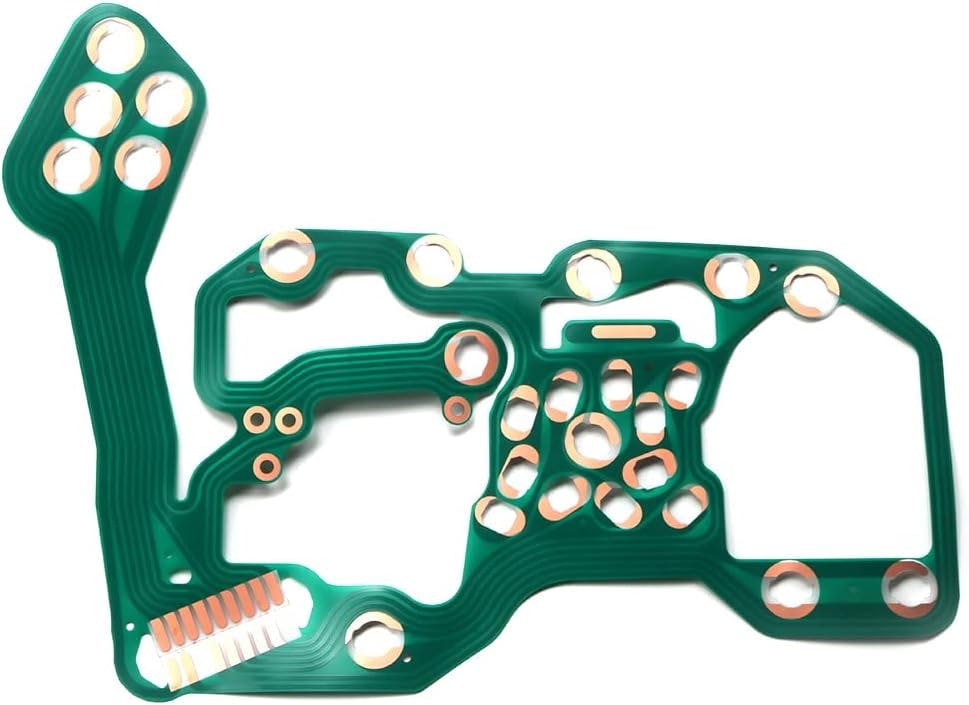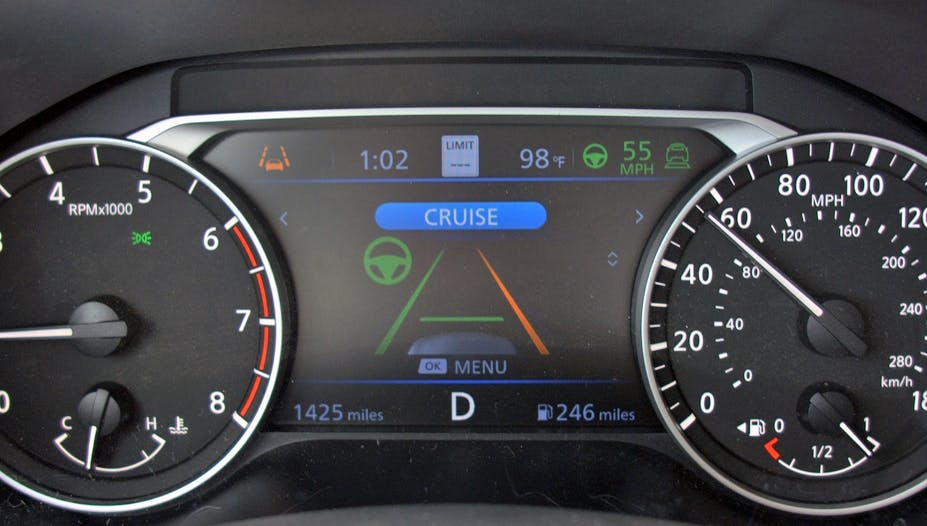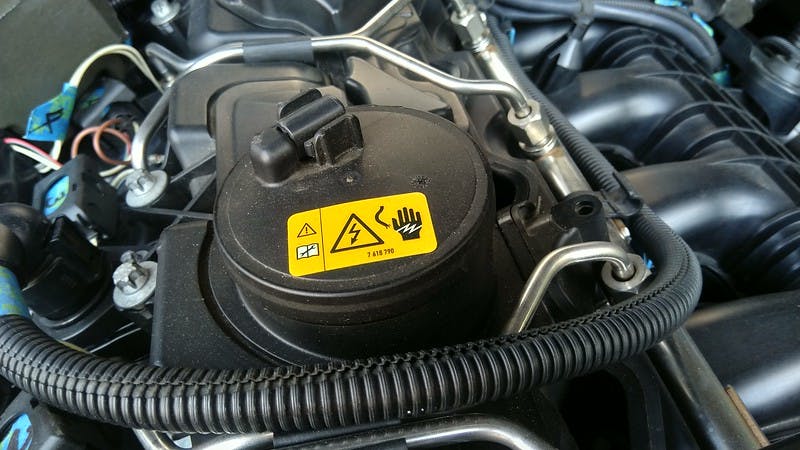According To You: Part(s) of a Car That Still Make No Sense?
Our According to You series is all about learning and enjoying the shared knowledge base of everyone here in the Hagerty Community. Last week we asked about car parts that are a mystery, items so hard to understand that one decides it’s not worth trying to figure them out. I started things off with the automatic transmission, and that certainly got the ball rolling.
As you will see below, there was some wiggle room for a different definition of “makes no sense,” one that’s just as relevant to this discussion. So have a scroll down and see what we came up with!
Printed Circuits

Jeepcj5: Gauge clusters make no sense to me. I’ve given up on more than one 1980-1986 Ford truck cluster after narrowing it down to that strange copper/plastic/sheeting stuff. So now two of my trucks have an aftermarket temp gauge and the fuel level is anyone’s guess since I never remember to write down the mileage at fill up.
Automatic Transmissions

DUB6: Shoot, Sajeev, tearing an automatic transmission apart is easy – child’s play, really. Now, re-assembling one into working order, THAT will put most folks into a padded room…
Jeepcj5: I disassembled an automatic transmission from a junk Nissan D21 once, just for the fun of it. I still have some of the pieces as a display in my office at work. Even more amazing than the automatic transmission itself are the folks that designed and built those things back in the 1930s-1940s before computers.
Safety Baby Sitters

audiobycarmine: By your phrasing “Make no sense”, you’re really meaning “inscrutable”, “enigmatic” or “unexplainable”. I took it as “unnecessary” or “pointless”.
By that definition, I’d nominate most of the modern safety babysitters, such as lane-drift warnings, sensors for announcing a car beside you, and the myriad other detectors replacing actual human attention and awareness.
Sajeev: I feel the need to offer a counterpoint to your (valid) definition of my question. After renting a late-model Camry LE with these features, I found them to relieve a lot of stress while driving from Houston to Tulsa. I’m not some distracted driver, I just motored down I-45 and found the experience far more relaxing. Whenever I buy new car again, it will absolutely have these features. (And they will be turned off when encountering a road more entertaining than the Interstate.)
The Integral Valve in the Valve Cover?

TG: As far as the subject goes, 2000s era BMWs have this valve in the valve cover that essentially performs the function of a PCV valve. When they fail, you get full manifold vacuum applied to the crankcase, with all kinds of adverse symptoms such as lean burn codes, oil in the intake, whistling through the crank seals due to the vacuum, etc.
These wonderful little gadgets are part of the valve cover, and the proper BMW-approved repair is a new valve cover. Fortunately the aftermarket does offer just the valve, and if you are skilled enough to cut the old one out without damaging the valve cover and without putting a bunch of plastic shavings in the engine. That is a 30 dollar repair, at least!
***
Check out the Hagerty Media homepage so you don’t miss a single story, or better yet, bookmark it. To get our best stories delivered right to your inbox, subscribe to our newsletters.



In the late 50s/early 60s engineers decided the rear pump on an automatic transmission made no sense. They obviously never had a dead battery with no jumper cables. With a rear pump you could push start a car with an automatic transmission. Of course with today’s cheesy plastic bumpers you probably wouldn’t want to. But I had to do that with the very rusty, well worn 55 T-Bird I owned in high school. I remember once letting it roll down a steep hill and being able to start it. I also remember butting bumpers against my mother’s car for a ground and using a 14 Ga wire on the positives to charge my battery. Can’t do that anymore either.
My issues are with the cheap plastic parts that break when they get older. How many engines got destroyed by overheating because some plastic elbow on the cooling system cracked and the coolant was lost? How many have to use JB Weld on interior plastic pieces that broke?
Rain sensors controlling the wipers. Never worked right, always either too fast or too slow causing the wipers to make too much noise. Interval wiper with lots of settings are way better.
My every day driver is a ’68 Ford F100, the first company to offer a simple car again is going to make a killing.
Side marker lights a problem get a 67.You are so right.
The ‘talking car’ robotic voice. My father had one in a Chyrsler. Whenever it would say ‘Your door is ajar’ he would swear at it. Highly entertaining for a little kid.
I’m sure that little kid didn’t leave the door ajar just to hear his dad swear – LOL!!
Yesterday, I was just doing some carb adjustment on my 1976 MG Midget 1500 that I bought brand new in Feb, 1977. As I did back then, I marvel at a car built in December 1976 with 1920’s – 30’s tech. For example, the oil pressure gauge is attached to a thin copper/brass alloy tube running all the way to a connection from the sump. And the coolant Temp gauge is likewise attached to a long capillary tube that runs to the thermostat housing. The only dashboard lights are for ignition, high beams and turn signals (that don’t self-cancel most of the time).
The good news is these cars use SAE standard nuts and bolts, parts are plentiful and inexpensive comparatively, and just abut anything can be fixed in a day.
There’s an old MG saying among Brit car guys like me: “MG’s are not hard to fix; they just break easily.”
Vehicles with an automatic transmission really don’t need a tach as “Standard Equipment”. You’re not doing the shifting so why do you need it?
Want one on a manual shift? $3,500+ for an “Accessory Package”? No thanks, I will buy one aftermarket for $35.
Yeah, they probably don’t “need” one. But I find that a tach is handy for monitoring whether, say, the torque converter lockup or overdrive is slipping while pulling a hill (where engine noise change is so subtle you might not be able to detect it). Or, in the case of the wife’s Toyota, the trans is upshifting and going into lockup. At highway speeds, that 6-speed in that quiet car is almost undetectable in 4-5-6 upshifts. Downshifts for accelerating, not so much.
I agree with most of the other things folks have mentioned, and add TV screens to list.
Paddle shifters exist
Yeah. I, too, have often wondered about that.
My 1960s Lotus 7 didn’t have much extraneous stuff. Not even doors. But a bit of sealant between the upper firewall and footbox would have been nice. (To mitigate the waterfall onto one’s thighs whenever it rained).
And no, I’m not “posting comments too quickly.”
Don’t get me started on the sensors. My wife’s ’14 Lexus has all kinds of sensors warning on being too close front, rear and side. When I asked her about the latest crack in her rear bumper (that’s her 5th bumper mishap in 7 years), she complained the sensors stopped working. Apparently, though, just for her. She’s become so inured to the beeping she ignores the sound.
Have her hearing tested. Maybe to frequency of the beep is a match for her hearing loss.
Computer controlled auto transmissions are un necessary and problematic. Cost way more to fix than a hydraulic controlled transmission. Many old hydraulic controlled automatics worked just fine without a computer. Loved the reliability of the old GM Turbo Hydramatic 400. Fantastic transmission. 4L80E was a step backwards.
Check Engine lights that make no sense – my Jeep showed a transmission fault that was not there when the transmission was serviced – but now California Smog Checks don’t actually check the tailpipe emissions – you simply fail if the Check Engine light is on – no matter what the cause, or if it is accurate!
Tire Pressure Warning sensors. The idea is great–although it seems to me if you’re too dumb to check your tires at least visually you’re too dumb to be driving–but if you keep a car more than a few years, the sensors start to fail and the damn light stays on all the time, even though you know all tires are at the proper pressure.
Older cars with this “helper” don’t identify which tire is low. That light has been illuminated on both our 2007 vehicles (RAV4 and Frontier) for two years now, despite replacing the sensors.
This!
Yes – my son’s 2012 F150 has those and they go on – and later off – because.e his daily drive is on a dirt road, appropriately named “Thunder Mountain Road” – with many bumps, deep potholes, etc. Seems hitting a bump increases the tire pressure and the freaking light goes on – and then off after a while. At first he was a bit perplexex “Dad, I checked the tire pressure using my tire gauge* and it was withing range” – so we decided to ignore the warning light. *and YES a 25 year-old does knowhow to use an analogue gauge.
Anyone who bemoans features like adaptive cruise control or auto high-beams has not used them. Adaptive cruise makes a road trip far more tolerable. Nearly everyone agrees standard cruise control helped immensely for longer drives. Adaptive cruise control (ACC) fixes all of the things we didn’t like about standard cruise control. For example, when someone slower than you gets in your lane and you have to shut it off. Having ACC means keeping your preferred distance from the vehicle in front of you, being able to maintain your preferred speed, and automatically adjust when maintaining that speed is not possible and recover when it is again. What’s not to
likelove about that?Auto high beams is basically the same. Have the high beams come one when the road is dark, but off when a vehicle is near. It works amazingly well in my newest vehicle. Which reminds me of a feature more people need to use: automatic head lights. My wife and I find every single night we are driving when it is dark there is at least one vehicle with no lights on. The tech is there and it works. Use it.
I LOVE adaptive cruise! Probably my favorite option on my 2012 Dodge Charger – although the heated steering wheel is amazing in the winter. Heated and cooled seats are nice too. Heated and cooled cupholders are more of a conversation piece than a useful feature.
I can’t believe nobody has mentioned the anti-theft alarm. Does anyone pay attention to one anymore?
No. And if you did pay attention it is already too late.
Um, pushbutton or rotary knob transmission shifters that require the driver to squint into the instrument cluster to see what gear you’re in.